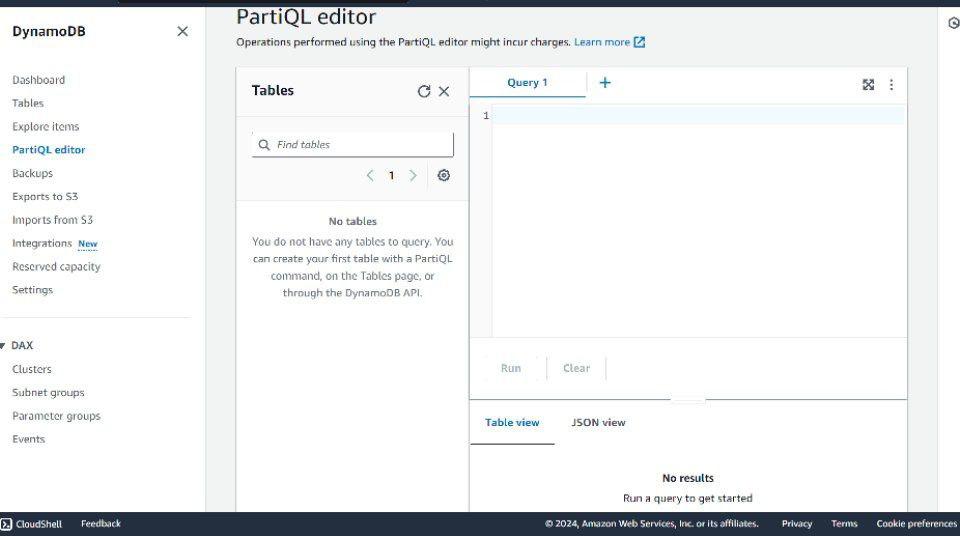Key Features Of DynamoDB
Last Updated :
26 Feb, 2024
Amazon DynamoDB has robust features like a fully managed, high scalability, and low-latency NoSQL database. Developers looking around for a NoSQL serverless database solution with a fully managed system should consider Amazon DynamoDB. This article aims to provide a comprehensive understanding of the key features of Amazon DynamoDB.
.jpg)
Pre-requisites
It’s helpful to have a basic knowledge of NoSQL databases and cloud computing.
Key Features
1. Fully Managed Service:
- Amazon DynamoDB is a fully managed serverless database.
- DynamoDB handles setup, infrastructure, maintenance, and scaling automatically.
2. NoSQL Data Model:
- In DynamoDB, data can be stored and retrieved as key-value pairs, documents, or wide column stores.
- It is a fast and flexible NoSQL database service.
3. Scalability:
- DynamoDB is a fully managed serverless database that automatically scales to fit developer’s needs.
- DynamoDB scales to zero.
- It has no cold starts, no version upgrades, no maintenance, no downtime.
- DynamoDB global tables is a multi-region, multi active database with 99.999% availability.
4.Consistency Models:
- DynamoDB offers a two-consistency model:
- Strongly Consistent Reads.
- Eventually Consistent Reads.
- It consistently handles more than 10 trillion request per day.
- DynamoDB allowing developers to choose between strict consistency or high performance depending on their requirements
5. Flexible Querying:
- DynamoDB supports various querying methods, containing key-value lookups, range queries,
- Secondary indexes which is optional and enabling efficient data retrieval based on different access patterns.
6. Backups:
- Point-in-time [PITR] recovery provides continuous backup and protect DynamoDB tables data from accidental or delete operations

- OnDemand backup and recover provides full backup of DynamoDB tables data.

- Developer can backup data from a few megabytes to hundreds of terabytes of data.
- The Backup and restore operation do not affect DynamoDB’s performance.
7. Integrated with AWS Ecosystem:
- DynamoDB is a part of Amazon ecosystem.
- The platform allows developers to build serverless applications, leverage infrastructure code, and
- build real-time data-driven applications through integrations with other services such as AWS Lambda, AWS CloudFormation, and AWS AppSync.
8. On-Demand and Provisioned Throughput:
- Amazon DynamoDB has two pricing models, pricing for on-demand capacity mode and pricing for provisioned capacity mode.
- On-demand capacity mode: Simplified billing, pay only for the read and writes your application performs.
- Provisioned capacity mode: Manage and optimize the pricing by allocating reads and writes capacity in advance.

9. Highly Available:
- In a Region, DynamoDB replicates data across multiple availability zones, ensuring high availability.
- DynamoDB automatically handles replication, recovery, reducing the possibility of data loss or service disruption.
- The availability SLA of DynamoDB is up to 99.999%.
Examples
Here are some examples of DynamoDB’s key features:
Example 1: Creating a Table

This example demonstrates how to create a DynamoDB table named ‘demo_table’ with a simple primary key ‘id’.
Example 2: Querying Data

- Use PartiQL editor to write queries.
Conclusion
AWS DynamoDB presents a wealth of features tailored to streamline data management for contemporary applications. By leveraging its scalability, performance, and flexible querying capabilities, developers can develop robust and efficient solutions to meet the demands of today’s data-intensive environments. It is undoubtedly one of the most useful tools in your toolkit, no matter whether you’re an experienced developer or just starting out with NoSQL databases. So why wait? Dive into DynamoDB today and unleash the full potential of your applications!
Key Features of DynamoDB – FAQ’s
Does DynamoDB support complex data structures?
Yes, DynamoDB supports multiple data types including numbers, strings, binary data, maps, sets, lists. also, Using DynamoDB you can create complex data structure such as nested JSON object or array.
Does DynamoDB support transactions for writing data?
Yes, DynamoDB supports ACID transactions, allowing you to batch multiple write operations together and ensure that they are all committed or rolled back together as a single unit of work.
How does DynamoDB handle conditional writes?
DynamoDB supports conditional writes, allowing you to specify condition that must be met for a write operation to succeed.
How can I automatically delete expired data from DynamoDB?
DynamoDB provides TTL feature to specify a timestamp attribute for items. It will automatically delete item when timestamp exceeds the specified TTL.
Share your thoughts in the comments
Please Login to comment...